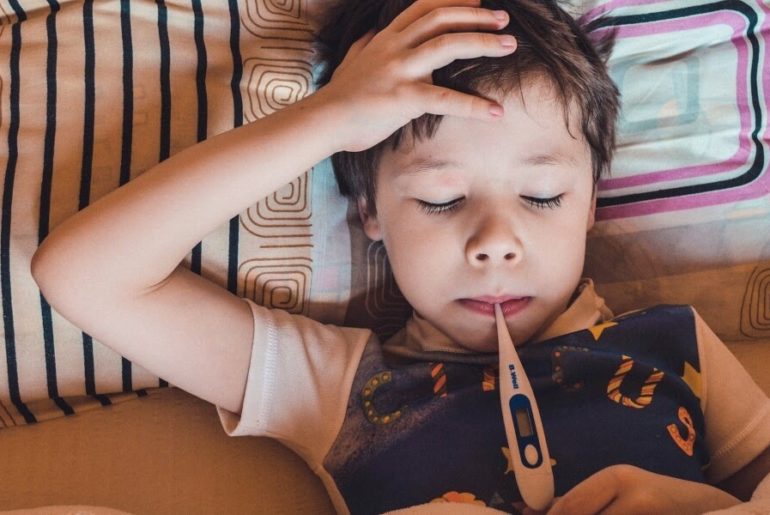Most of the conversation surrounding Coronavirus prevention has been focused on older people. When the outbreak began, many studies pointed at the fact that people 50 or older might be most susceptible to the disease, which is why they were deemed “population at risk”. However, as scientists learn more about the virus, they are finding that the disease may have cunning ways of attacking those who were previously thought to be safe.
“When we first started with this virus, we were told children are not affected, which was a great sigh of relief,” New York Governor Andrew Cuomo said in a press conference. “But now we’re finding out that may not be 100 percent accurate.”
Over the last couple of weeks, a new inflammatory disease has been affecting children all over the U.S., and possibly throughout the world. The alarm was first sounded in New York, where more than a hundred children have contracted the disease with at least 60% of them having tested positive for COVID-19 while 40% tested positive for its antibodies.
“We must stay alert with this virus because we’re still learning, and what we thought we knew doesn’t always turn out to be true,” Governor Cuomo said. “We’re seeing cases where children who may have been infected with the COVID virus show symptoms of an inflammatory disease like the Kawasaki disease or toxic shock-like syndrome. New York State has been aggressively investigating these new cases and is leading the efforts on this nationwide, and the more we know the more we know, the more we’ll communicate.”
Kawasaki disease, which is a rare illness that affects about 3,000 children each year, was first discovered in Japan in the 1960’s by Tomisaku Kawasaki. According to the Centers for Disease control and Prevention (CDC), the condition is the leading cause of acquired heart disease in the United States, as serious cases of Kawasaki can cause the inflammation of the arteries. The condition does not appear to be contagious or hereditary and doctors don’t yet know what exactly causes it. However, some research papers have linked its trigger to viral infection.
According to Kids’ Health, the symptoms for the disease comes in phases. The first tell-sign of the disease is a relentless fever, which can last up to two weeks. This is often accompanied by other symptoms, which include red eyes, a pink rash on the back, belly, arms, legs, and genital area, cracked lips, sore throat, swollen palms and soles of the feet with a purple-red color and swollen swollen lymph glands in the neck.
Then, two weeks after the fever starts, phase two begins. With it, come new symptoms, including peeling skin on the hands and feet, joint pain, diarrhea, vomiting and belly pain. If the disease is caught in time, doctors have a relatively easy time getting the patient back to health in just a couple of days. However, there are certain cases in which if the disease isn’t caught early enough, there can be several complications. These late-stage problems are often related to the heart, and is often what causes some patients to lose their fight with the disease.
The description is similar to what doctors have been seeing in young patients, who often present persistent fever, inflammation and poor function in organs such as the kidneys or heart, according to CNN. Other symptoms include red eyes, a bright red tongue and cracked lips. However, even if most of the symptoms seem to align with Kawasaki disease, some doctors have expressed their concerns in categorizing as such in these early stages.
“This new entity has some similarities to Kawasaki disease,” Dr. Moshe Ardit, a pediatric infectious diseases expert at Cedars-Sinai Medical Center in Los Angeles, told CNN. “But there are a lot more features that are consistent with toxic shock syndrome, such as multi-organ system involvement and severe abdominal involvement with diarrhea.”
Dr. Jeffrey Burns, a critical care specialist at Boston Children’s Hospital, told CNN that the leading hypothesis is that the multisystem inflammatory syndrome is not directly caused by the virus, but rather the immune response of the patient to the virus. So far, three children ages five, seven and 18, have died after showing symptoms of the illness in New York.
“New York is in many ways the tip of the arrow here,” Cuomo said. “(We are) looking at 102 cases where children who may have been infected with the COVID virus show symptoms of an inflammatory disease.”
Cuomo said that “it’s very possible that this has been going on for several weeks and it hasn’t been diagnosed as related to COVID,” and he alerts that although New York is seeing the majority of cases, it is not particular to the state. In fact, he said that 14 other states (California, Connecticut, Delaware, Georgia, Illinois, Kentucky, Louisiana, Massachusetts, Mississippi, New Jersey, Ohio, Pennsylvania, Utah and Washington), as well as Washington D.C. and five European countries, have reported cases.
“We can expect that each of the epicenters will see clusters of these emerging roughly four to six weeks later,” Burns said. “It makes sense that it emerged in New York first because New York had the largest and most severe outbreak.”
Scientists are still trying to determine the inflammatory syndrome’s relation to the new coronavirus. Not all children with it have tested positive for the virus and not all children that have tested positive for the virus have experienced the disorder. Nevertheless, experts are warning parents to be on the lookout for symptoms.
“If your child has been exposed to someone who had COVID, even if it was several weeks ago, that is a special alert in this situation,” Cuomo said. “Parents say ‘should I be concerned?’ You should be aware.”

